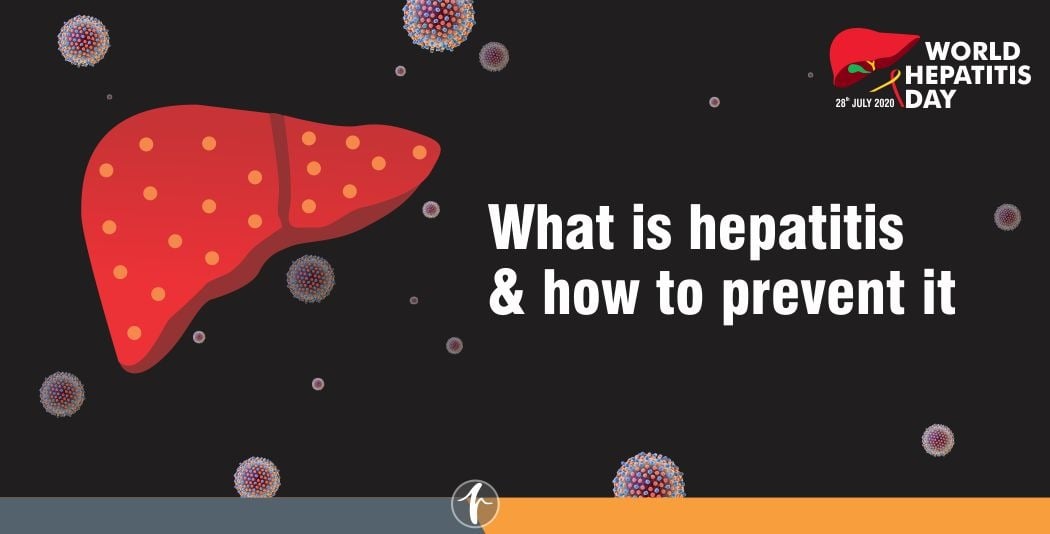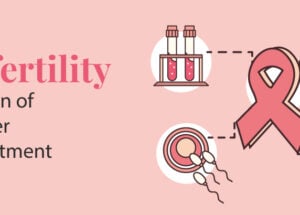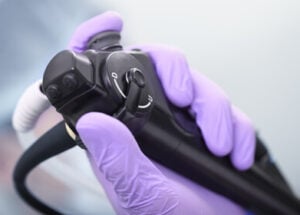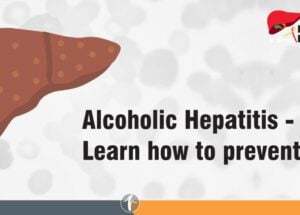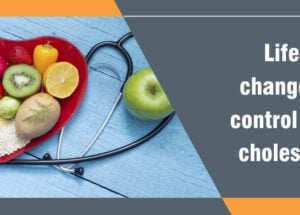Newborn Jaundice – A Complete Guide
February 17, 2025

Jaundice is caused by increased bilirubin in the blood. When the red blood cells are broken down, the byproducts are metabolized by the liver and removed. The liver also detoxifies toxins in the body and secretes them into the intestine called bile.
When there is excessive breaking of red blood cells are problem in liver in secreting bile the bilirubin in blood increases. This increased bilirubin causes yellowish discoloration of skin and eyes. Jaundice is not a disease, but rather a sign of an elevated blood bilirubin level.
Newborn babies are born with high hemoglobin (16 to 18 gms/dl) due to low oxygen in mothers blood. When they are exposed to normal air after birth there is increased breakdown of red blood cells so that the haemoglobin comes down to normal values ( around 12 -13 gm/dl). This increased breakdown is the cause of jaundice in newborn babies.
What are Physiological Jaundice and Pathological Jaundice in Newborns?
All Newborn babies get jaundice, which usually peaks 3 days after birth. This clears 7 days after birth in term babies and within 14 days in preterm babies. This is called physiological jaundice. It is a natural phenomenon that happens in all newborn babies.
But, in certain conditions, the level of bilirubin shoots up, requiring some form of treatment. This is called pathological, as there would be some underlying problem causing it. Some of the causes of infant jaundice are:
- Babies born preterm (before 37 weeks)
- Babies are bruised during birth
- Babies with a brother or sister who had newborn jaundice
- Babies whose mothers are Rh-negative and/or have type O blood
- If a mother and baby’s blood group and type are different (or “incompatible”); the mother’s immune system may damage the baby’s red blood cells
- Babies with Middle Eastern, East Asian, or Mediterranean ethnicity
- Overall, bilirubin is also more slowly removed in the newborn compared to adults because a baby’s liver and intestines are not fully functional. In Asian babies, the ability to remove bilirubin takes longer to develop.
Management
Any baby can get jaundice, but severe jaundice that is not treated can cause brain damage. Your baby should be checked for jaundice in the hospital and again within 48 hours after leaving the hospital. Ask your doctor or nurse about a jaundice bilirubin test.
How Can I Tell if My Baby Has Jaundice?
Ask about a bilirubin test before you leave the hospital. The best way to measure bilirubin is by having a sample of your baby’s blood taken. Your doctor or nurse will compare the results from your baby’s jaundice bilirubin test to what is normal for a baby the same age (in hours).
Signs
Some babies with jaundice might look yellow or even orange, but it is not possible to notice jaundice in all babies, especially those with darker skin color. Talk to your doctor or nurse immediately if your baby:
● Has fewer than 4 wet or dirty diapers in 24 hours
● Has trouble nursing or sucking from a bottle
● Is very sleepy and hard to wake, even to feed
● Cannot be comforted, has a shrill and highpitched cry, or both
● Is limp or floppy
Levels
Bilirubin levels in newborns vary depending on their age, and monitoring these levels is essential in assessing the severity of jaundice. Below is a general guideline based on age and total serum bilirubin (TSB) levels:
- Less than 24 hours old: TSB above 10 mg/dL
- 24 to 48 hours old: TSB above 15 mg/dL
- 49 to 72 hours old: TSB above 18 mg/dL
- Older than 72 hours: TSB above 20 mg/dL
Normal Bilirubin Range:
- Within the first 24 hours of birth, normal bilirubin levels range from 0.3 mg/dL to 1.0 mg/dL.
Most newborns experience physiological jaundice, which is generally harmless and peaks around the 4th or 5th day after birth. However, if jaundice persists beyond these timeframes, particularly after 2 weeks for formula-fed babies or 4 weeks for breastfed babies, it’s important to consult a doctor.
What Else Can I Do to Keep My Jaundiced Baby Healthy?
Take jaundice seriously and stick to the followup plan for appointments and recommended care. Make sure your baby is getting enough to eat. The process of removing waste also removes bilirubin in your baby’s blood. If you are breastfeeding, you should nurse the baby at least 8 to 12 times a day for the first few days. This will help you make enough milk for the baby and will help keep the baby’s bilirubin level down. If you are having trouble breastfeeding, ask your doctor or nurse for help.
Complications
In babies whose blood bilirubin levels reach harmful levels, bilirubin may get into the brain and cause reversible damage (called acute bilirubin encephalopathy) or permanent damage (called kernicterus or chronic bilirubin encephalopathy). Frequent monitoring and urgent, early treatment of babies at high risk for jaundice helps to prevent severe hyperbilirubinemia.
What is Kernicterus?
Kernicterus is a type of brain damage that can result when jaundice is not treated properly. A child with kernicterus can have cerebral palsy, hearing loss, problems with vision and teeth, and sometimes mental retardation. Kernicterus can be prevented if jaundice is properly treated.
Jaundice Treatment in Newborns
The goal of treating jaundice is to efficiently and safely reduce the level of bilirubin. Babies with mild hyperbilirubinemia may need no treatment at all. Babies with higher bilirubin levels will need brief treatment, which is described below.
Jaundice is common in premature babies (those born before 38 weeks). Premature babies are more vulnerable to hyperbilirubinemia because brain toxicity occurs at lower levels of bilirubin than in term babies. As a result, premature babies are treated at lower levels of bilirubin but with the same treatments discussed below.
Frequent feeding – Providing adequate breast milk is an important part of preventing and treating jaundice because it helps in the elimination of bilirubin in stools and urine. If your baby is not getting enough through breastfeeding, your doctor can talk to you about options such as supplementing with formula or donor breast milk. You will know that your baby is getting enough milk if s/he has at least six wet diapers per day, the color of their stools will change from dark green to yellow, and s/he seems satisfied after feeding.
Phototherapy – Phototherapy (“light” therapy) is the most common medical treatment for hyperbilirubinemia in babies. In most cases, phototherapy is the only treatment required. The baby’s skin surface is exposed to special blue light, which breaks bilirubin into compounds that are easier to eliminate in the stool and urine. Treatment with phototherapy is successful for almost all babies.
Phototherapy is usually given in the hospital, but in certain cases, it can be done at home if the baby is healthy and at low risk of complications.
Babies should have as much skin as possible exposed to the light. Babies are usually naked (or wearing only a diaper) in an open bassinet or warmer, but need to wear patches or a special mask to protect the eyes (image 1). Phototherapy should be continuous and stopped only for feeding and skin-to-skin care of the baby. Some hospitals have special phototherapy blankets that allow treatment to continue while you hold or feed your baby.
Exposure to sunlight was previously thought to be helpful but is no longer recommended due to the risk of sunburn unless ultraviolet rays are filtered out. Sunburn does not occur with the lights used in phototherapy.
Phototherapy is stopped when bilirubin levels drop to a safe level. It is not unusual for babies to still appear jaundiced for a period of time after phototherapy is completed. Bilirubin levels may rise again 18 to 24 hours after stopping phototherapy. Although rare, this requires follow-up for those who may need more treatment.
Side effects – Phototherapy is very safe, but it can have temporary side effects, including skin rashes and loose stools. Overheating and dehydration can occur if a baby does not get enough breast milk or formula. Therefore, a baby’s skin color, temperature, and number of wet diapers should be closely monitored.
Unusually, some babies can develop “bronze baby” syndrome, a dark, grayish-brown discoloration of the skin and urine. Bronze baby syndrome is not harmful and gradually goes away without treatment after several weeks.
Breastfeeding during phototherapy – It is important for babies receiving phototherapy to drink adequate fluids (ideally breast milk) since bilirubin is excreted in the urine and stool. Breastfeeding should continue during phototherapy. Use of oral glucose water is not necessary. In babies with serious dehydration, intravenous (IV) fluids may be necessary to correct the loss of fluid.
Babies who are not able to get enough breast milk, lose a lot of weight, or are dehydrated may need extra expressed breast milk or medically recommended formula for a short time. Mothers who supplement with formula should continue to breastfeed and/or pump regularly to maintain their milk supply.
There is some controversy about the practice of giving supplemental formula to exclusively breastfed babies. If you are considering doing this, it’s a good idea to talk to your baby’s doctor or nurse first. (See “Patient education: Breastfeeding guide (Beyond the Basics).)
Exchange transfusion – Exchange transfusion is an emergency, life-saving procedure that is sometimes necessary to rapidly decrease bilirubin levels. The transfusion replaces a baby’s blood with donated blood to quickly lower bilirubin levels (2 to 3 hours). Exchange transfusion is performed only for babies who have not responded to other treatments and who have signs of or are at significant neurologic risk due to bilirubin toxicity.
Cholestatic Jaundice in Newborn
This is a different type of jaundice due to liver disease (Not due to excessive red blood cell breakdown or immature liver). There are several diseases that can cause jaundice in newborn such as biliary atresia (Block in the bile duct), metabolic disorders, genetic disorders, etc.
How to Differentiate Cholestatic Jaundice from Physiological Jaundice?
We can request the lab to perform split bilirubin, where they will look at indirect fraction and direct fraction of bilirubin. If the indirect fraction is more than 10% of total bilirubin, it is suggestive of cholestatic jaundice. All cholestatic jaundice has to be thoroughly investigated as it always indicates underlying liver disease.
When to See a Doctor
While mild jaundice is common in newborns and often resolves on its own, certain signs require medical attention. Parents should closely monitor their baby’s skin tone, feeding habits, and overall behavior to detect any concerning symptoms early.
Seek Immediate Medical Care if your Baby:
- Develops a deep yellow or orange tint on the skin, especially on the abdomen, arms, legs, or soles of the feet.
- Has yellowing in the whites of the eyes.
- Appears excessively sleepy, difficult to wake, or unusually irritable.
- Shows poor feeding or refuses to eat.
- Has a weak suck or struggles to latch during breastfeeding.
- Displays slow weight gain or sudden weight loss.
- Cries with a high-pitched or unusual tone.
- Develops fever or signs of illness alongside jaundice.
Routine Check-ups for Jaundice:
Newborns should have their bilirubin levels monitored during hospital stay and after discharge. If your baby is sent home within the first 72 hours of birth, schedule a follow-up visit within two days to check for worsening jaundice. Babies at higher risk, such as preterm infants or those with difficulty feeding, may need additional monitoring.
Early detection and treatment of severe jaundice can prevent complications, so contact your pediatrician if you notice any worsening symptoms.



